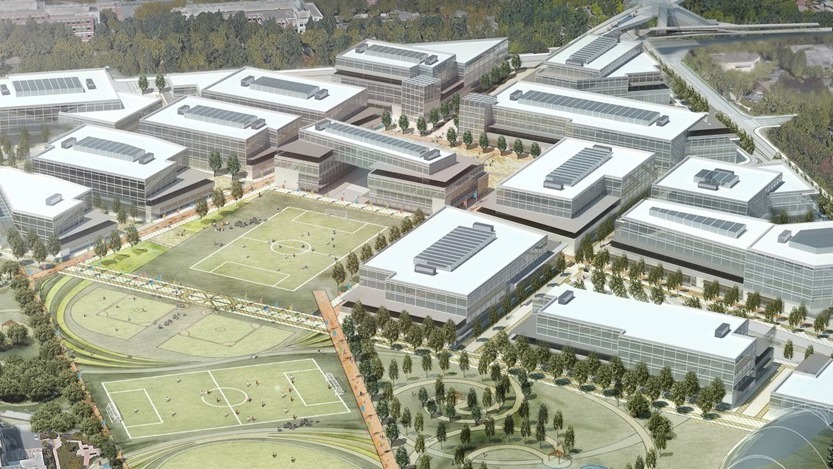Author | Marcos MartinezIt is 8:00 p.m. in Smart City and the Sun is going down. Various areas light up on the Emergency Control Centre screen. They are simply messages to indicate that various automated emergency systems are up and running. Police vehicles are called to specific districts, an ambulance sets off and a fire warning is issued.There have not been any altercations yet, nobody has been injured and there is no fire. But the series of algorithms that help to manage the workload have seen behaviours on social media and they trigger police alarms, an activity tracker has identified abnormal cardiac patterns and an area near the city has a low relative humidity. The city is awake.
What does an emergency system do?
 Tasks coordinated by a modern emergency system can go far beyond theft or fire alarm warnings. For example, “Gunfire locator” is a gunfire detection system, which consists of microphones located in the city of Oakland (California, United States). If a gunshot is detected, an algorithm triangulates the position and sends the nearest patrol car. Since 2012, when the system was installed, firearm “incidents” have dropped from 671 per square mile to 228, 66%.This is one of the hundreds of projects that cities are testing for their emergency control centres. Often these offices tend to integrate all types of emergencies and, for years now, they are grouped together under a single freephone number 112 in the European Union, 911 in the US, etc.Therefore, when an event of any sort occurs, the emergency is addressed from the same coordinated place, thus integrating the police force, the fire department and health care services.
Tasks coordinated by a modern emergency system can go far beyond theft or fire alarm warnings. For example, “Gunfire locator” is a gunfire detection system, which consists of microphones located in the city of Oakland (California, United States). If a gunshot is detected, an algorithm triangulates the position and sends the nearest patrol car. Since 2012, when the system was installed, firearm “incidents” have dropped from 671 per square mile to 228, 66%.This is one of the hundreds of projects that cities are testing for their emergency control centres. Often these offices tend to integrate all types of emergencies and, for years now, they are grouped together under a single freephone number 112 in the European Union, 911 in the US, etc.Therefore, when an event of any sort occurs, the emergency is addressed from the same coordinated place, thus integrating the police force, the fire department and health care services.
What a call to the emergencies triggers
 A phone call to the emergency services triggers an emergency response protocol following very strict guidelines. Generally, the order of action is as follows:
A phone call to the emergency services triggers an emergency response protocol following very strict guidelines. Generally, the order of action is as follows:
- Collect information: what is happening and where
Trained personnel must record the place and the event during this initial contact, while interacting with the potential victims and providing immediate support. Very often the victim or the witnesses may not know exactly where they are located and, while they need to be located with vague references, personnel also need to know how to remain calm and inform other experts.
- Notifying in real time
While locating the event, as more details are obtained, the telephone operator transfers part of the responsibility on to other specialist teams. An example of this is on roads, once the type of traffic accident and the seriousness thereof has been identified, the ambulance service (health care) is notified, traffic agents (to coordinate the traffic) and, sometimes, the fire department (to extinguish fires, use shears, remove vehicles).
- Eliminating duplicities
Very often phone calls concerning the same event are made simultaneously, occupying various lines and using what are already scarce resources. Therefore, they need to be filtered one by one in order to optimise these resources and, minutes later, review the assignment of these.
- Transferring calls to specialist departments
Once the event has been located and resources have been assigned (sometimes before), the call is often transferred to another specialist. The person on the other end may need specialist assistance. For example, medical care, if a tourniquet or resuscitation is required. This expert will give remote instructions.Today, much of the work is carried out manually. From receiving the call, notifying other members or transferring the call to other experts. Together with priority management or emergency triage and other types of assignments by areas. But automation is not far away.
Police robots in problematic areas
 Not all cities have the same crime rates, or their districts. Maibao, the police robot developed by the Beijing Aerospace Automatic Control Institute (BAACI), has been patrolling the most troublesome streets and neighbourhoods of Peking for some time now. Its 1.7 metres in height allow its “eyes” (cameras) to observe and perceive any criminal conduct.Once a threat is identified, Maibao alerts the emergency system, automating the call phase, but it is also capable of following suspects, recording them, and even serves as a police loudspeaker to deter delinquents. Also in China, this time in Handan, a number of similar robots are in charge of policing and traffic management tasks.
Not all cities have the same crime rates, or their districts. Maibao, the police robot developed by the Beijing Aerospace Automatic Control Institute (BAACI), has been patrolling the most troublesome streets and neighbourhoods of Peking for some time now. Its 1.7 metres in height allow its “eyes” (cameras) to observe and perceive any criminal conduct.Once a threat is identified, Maibao alerts the emergency system, automating the call phase, but it is also capable of following suspects, recording them, and even serves as a police loudspeaker to deter delinquents. Also in China, this time in Handan, a number of similar robots are in charge of policing and traffic management tasks.
Automated ambulances?
Some time ago, during the Google I/O 2018 event, an automated call to a restaurant was made. The robot, technically a voice assistant, made a reservation pretending to be a human customer and the manager on the other end of the line did not notice this. Therefore, it may be that, in the future, surveillance systems, including emergency calls, will be automated. Why wouldn’t the professional on the phone be automated, or even an ambulance going around?The truth is that we are already experiencing the relocation of medical material, including advanced material, in our cities AEDs or automated external defibrillators are a good example of this. This medical device enables practically any citizen to be able to assist another experiencing ventricular fibrillation.This form of deployment was preceded by a fire warning system (the classic button inside a box that must only be opened in the event of an emergency), and public fire extinguishers that we have been used to for years. All these tools ensure that emergencies can be treated much faster, regardless of whether or not qualified personnel are present. It seems feasible for automated ambulances to drive around streets in neighbourhoods that are statistically more likely to see an incident.Dubai, Philadelphia or Shanghai use data stored in official records to guide their police patrols. We have even reduced the number of criminals by fifty per cent by suffocating “hotspots” with a police presence.The digital transformation of emergency services may also have a major long-term impact. By using the contrasted data through the use of Big Data to identify trends and extrapolate causes, cities can make progress in crime prevention, replacing repression (controversial for citizens and financially expensive) with prophylaxis.
It seems feasible for automated ambulances to drive around streets in neighbourhoods that are statistically more likely to see an incident.Dubai, Philadelphia or Shanghai use data stored in official records to guide their police patrols. We have even reduced the number of criminals by fifty per cent by suffocating “hotspots” with a police presence.The digital transformation of emergency services may also have a major long-term impact. By using the contrasted data through the use of Big Data to identify trends and extrapolate causes, cities can make progress in crime prevention, replacing repression (controversial for citizens and financially expensive) with prophylaxis.
Small steps that save lives
The equipment in ambulances is not a coincidence. Nor their GPS systems, the number of professionals on board or the way they are distributed across cities. Regardless of the level of digital transformation of each modern city, the truth is that a large number of decisions are made based on databases, and if an algorithm makes a decision, it is important for people to trust them.If a fire engine’s navigator establishes a route, the personnel onboard must trust that it is optimised, even if they think there may be another possible route. This type of trust, delegating some decisions to machines, is critical in emergency management, and we are adopting them slowly but steadily.Images | Nathan John, iStock/MattGush, iStock/Nelli Velichko, ?????? , iStock/robwilson39






















































